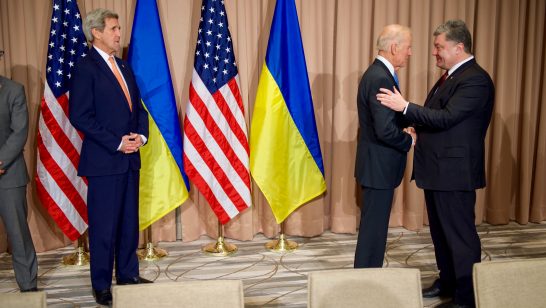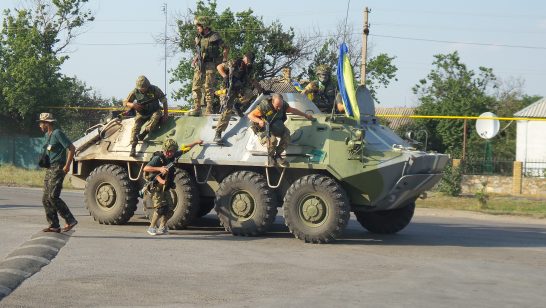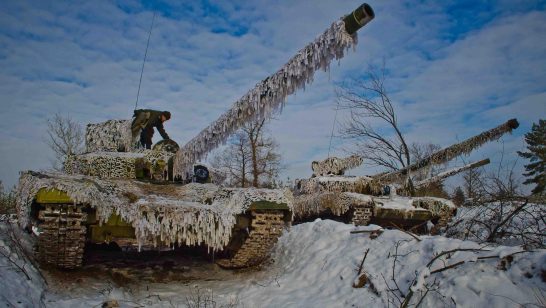
This commentary is a follow-up to the article “The Case for Providing Lethal Military Aid to Ukraine“ published by the European Leadership Network on 9 November 2017.
Why is the United States once again considering the provision of lethal defensive weapons to Ukraine? We last had this debate in 2015, when the struggle between Kyiv and Russian-supported separatists was raging with Russian forces themselves directly engaged, including on the ground in the Donbas. It was uncertain how far Moscow wanted to push into Ukraine, whether there was substance behind the talk of Novorossiya or a land bridge to Crimea. Supplying lethal weapons, proponents argued, would cause Moscow to reconsider and pull back from its aggressive designs.
President Obama ultimately decided against supplying the weapons, convinced that Ukraine was a top priority for Moscow and thus arming Ukraine was needlessly provocative. It would only lead Moscow to escalate the conflict to Ukraine’s loss – even the best-equipped Ukrainian forces would have been no match for the Russians – and neither the United States nor its European allies had any attention of inserting their own forces into the fray.
Obama’s was the right decision. It remains the right decision now, for if anything the situation has changed in ways that make the provision of lethal weapons only more provocative and less relevant to the struggle in the East and the future of Russia’s relations with the West and Ukraine.
The conflict is for all practical purposes frozen, despite constant skirmishing along the line of contact. No significant amount of territory has changed hands since the battle for Debaltseve in February 2015. Moscow appears disinclined to raise the temperature today. Putin’s proposal for inserting UN peacekeepers along the line of contact may be unacceptable. But at worst it would reinforce the status quo, and the West might yet be able to reshape it in ways that advance a satisfactory resolution of the crisis. At the same time, Ukraine remains a high priority for Moscow, much higher than it is for the West.
So what purpose is supplying lethal defensive weapons supposed to serve?
Advocates offer two broad reasons. First, as argued before, the provision of arms would change Moscow’s calculus, eroding its position in the Donbas and making it more amenable to serious negotiations to end the conflict. It is hard, however, to see why that would be so, unless, contrary to all evidence, Moscow intends to push further militarily into Ukraine or an emboldened Kyiv decides to launch an offensive against the separatists, whom Moscow has no intention of abandoning. Why else would Ukraine need to use the weapons? But Russian forces would easily outclass the Ukrainians. It is not even clear that Russian casualties would mount, as the advocates insist, and certainly not to levels that would give Moscow pause, given the stakes.
Second, advocates now also argue that the provision of weapons would help build up Ukraine’s capabilities against a continuing Russian threat over the longer term. This is undoubtedly true. Ukraine does need to raise a better trained and equipped military to deal with Russia and other threats. But it does not necessarily need US weapons for that purpose. Ukraine has one of the largest defense-industrial sectors in the world, a legacy of the Soviet period, and it ranks among the world’s top ten arms exporters today. What the sector needs is investment to enhance its efficiency and expand the range of equipment it manufactures. Under the circumstances, it would make more sense – and prove less provocative – to help Ukraine expand and modernize the defense-industrial sector so that it could supply the military with most of what it requires from domestic sources.
In short, the reasons for arming Ukraine are not compelling. And if the issue has emerged again it has less to do with the situation in Ukraine than with the growing anti-Russian animosity in the United States, fueled by Russian interference in the 2016 presidential election and concern about President Trump’s fondness for President Putin. Along with the harsher sanctions regime passed by Congress this past summer over Trump’s objections, the provision of lethal arms is intended to inflict more severe punishment on Russia for its aggression and violation of international norms. Whether it helps change Russia’s calculus enough to bring the Ukraine crisis to a satisfactory resolution is a secondary question for the many who believe that punishing Russia a moral obligation.
The practical task, however, remains solving the West’s and Ukraine’s Russia problem. The immediate challenge is negotiating a resolution of the Donbas conflict that restores Ukraine’s sovereignty over that region and reintegrates it into Ukraine. The Minsk Agreement provides the elements of a resolution, but by all accounts it is unimplementable in its current form. This situation calls for a different diplomatic approach, not one that necessarily abandons Minsk, but rather one that disaggregates its elements and provides for an easing of sanctions in parallel with each concrete step Moscow takes to fulfill its part of the agreement. The diplomatic approach should also consider a politically-binding long-term moratorium on Ukraine’s membership in NATO or the EU to dampen the geopolitical contest over Ukraine.
As tensions in the East ease, more attention could then be focused building a competent and efficient Ukrainian state, which is, as history demonstrates, the best long-term guarantee against any aggressive Russian designs. Much progress has been made since the Revolution of Dignity four years ago, but much more remains to be done. In particular, the oligarchic-clan system that has dominated politics since reemergence of an independent Ukraine in 1991 needs to be replaced by a more open and less corrupt system. Needlessly arming Ukraine only escalates tension in the region and distracts attention from the tasks that are indeed critical to Ukraine’s future.
The opinions articulated above represent the views of the author(s), and do not necessarily reflect the position of the European Leadership Network or any of its members. The ELN’s aim is to encourage debates that will help develop Europe’s capacity to address the pressing foreign, defence, and security challenges of our time.



